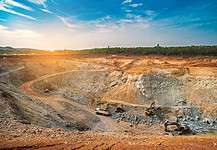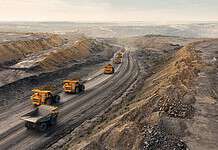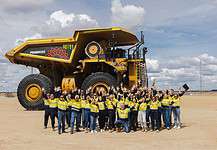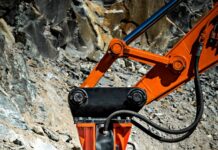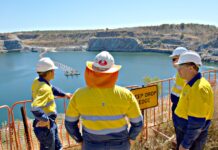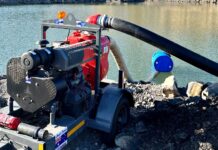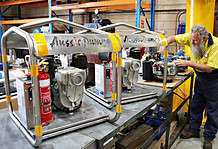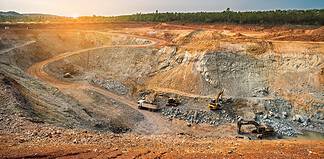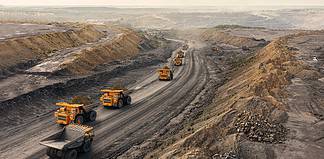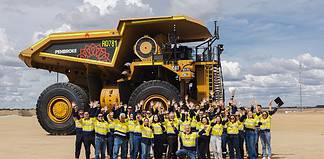SELECTING the right boom is essential to getting the job done right.
Before selecting the boom system, the needs of both operators and maintenance personnel should be taken into consideration as they are often overlooked during initial design.
When positioning the boom system, thought should be given as to where an operator might be able to safely stand, out of reach of the boom, to ensure a clear view of the work area.
By properly positioning an operator viewing platform, or an operator cabin, the risk of operator injury can be eliminated.
Similarly, by considering and making provision for suitable maintenance park locations with tool and rockbreaker change frames, changing rockbreaker tools and rockbreaker removal for servicing can be done safely and efficiently.
There are several critical factors that should be considered when purchasing a new rockbreaker boom: the correct sizing of the rockbreaker, the correct boom size and reach, the correct positioning of the slew base to optimise the working area, the availability of safety systems including automation and remote operation and of course the availability of tools and spare parts.
The correct sizing of a boom allows the rockbreaker to optimise its role in any crushing circuit.
Rammer boom systems have been an integral part of Australian crushing circuits for more than 40 years.
The company’s tried and tested designs are manufactured on a global scale for a global market, and as a result they are also priced competitively.
Total Rockbreaking Solutions engineering manager Paul Ingleson said that the starting point for any new boom is two-fold.
“Firstly, the correct hydraulic rockbreaker for the rockbreaking duty and application needs to be selected and then, secondly the necessary reach for the boom system must be determined by selecting the best, or most practical, location to mount the rockbreaker boom system base and then assessing the horizontal and vertical reach requirements from that mounting location,” he said.
The correct hydraulic rockbreaker requires the consideration of the size and hardness of the rocks that will be broken, and also the number of oversize rocks to be broken per hour.
Mr Ingleson said that this is what is known as the ‘rockbreaking duty’.
“You might think that as the rock hardness increases, the rockbreaker needs to get larger,” he said.
“But that is not necessarily the case.
“If you only expect an oversize rock every three or four hours, it might not be absolutely necessary to install the largest rockbreaker available, as there are other practical considerations that should be taken into account.”
These considerations include such things as if there are any physical limitations to get the rockbreaker to the rock – such as the size of the chute, and also the capacity of the existing support structure and the size of boom it can support without major modifications.
The loads imposed on structures with a long reach boom and a heavy rockbreaker can be significant and must be taken into consideration.
Rammer boom systems are available in many different sizes with more than 40 models that suit all types of mining and quarrying applications.
The smaller C series booms start at a 3m reach, which makes them perfect for smaller stationary crushing plants or mobile crushers, while the massive, heavy duty XL series reach up to 17m and are used in mining operations over gyratory crushers or ROM bins.
And, as expected, for each boom model there is a range of possible rockbreaker sizes that should be carefully considered.
Hydraulic power units are also available to suit the required pressure and flow for any boom and rockbreaker combination.
Safety
Safety is a primary objective for all modern mines. Increasingly, mine operators are turning to technology and remote operation to reduce the exposure to risk for operators and nearby personnel.
BoomSafe is a system that has been developed specifically for hydraulic boom systems to provide collision prevention and automated movements to improve safety of rockbreaking operations.
Mr Ingleson said that it works by monitoring the position and orientation of the boom – effectively ‘supervising’ all movement commands from the local radio controller or remote operation station.
“With self-aligning gyro sensors and a rotary encoder to determine slew location, BoomSafe® is able to determine the precise orientation and position of the rockbreaker at all times,” he said.
“Configuration of the system involves simply driving the boom through the ‘safe area’ to create a 3D safe working envelope.
“Once defined, the system will ensure that operators cannot drive the boom system outside of this safe work area – preventing contact with surrounding structures and equipment.
“Automated movements are simply and quickly programmed by trained maintenance staff for any movement sequence, including park, deploy or maintenance and when set, the boom system can be deployed or parked by the simple press of a button.
“The system can also allow accurate movement of the rockbreaker into maintenance cradles or horizontal positions for tool changing.”
Remote operation
BoomSafe® also has application in the emerging field of remote operation.
Many large mining companies are moving toward remote operation of rockbreaker boom systems, as with remote operation systems, companies can operate their rockbreakers via a plant network at any location in the world via a laptop or PC.
BoomSafe allows for the control of multiple rockbreakers across multiple sites.
Mr Ingleson said that there is no limit to the number of rockbreakers that can be added.
“With one of more remote operator stations running the Remote Operating Station application, sharing control of a group of rockbreakers is on a first-come-first-serve basis,” he said.
“Each rockbreaker can be assigned a unique remote operation password for security, and is protected by an optional IP address whitelist to prevent unauthorised access.”
The Rammer line of booms, rockbreakers and the state-of-the-art BoomSafe system will make any rockbreaking project run smoothly, safely and efficiently.
More Information can be obtained from any authorised Rammer dealer or by visiting rammer.com


